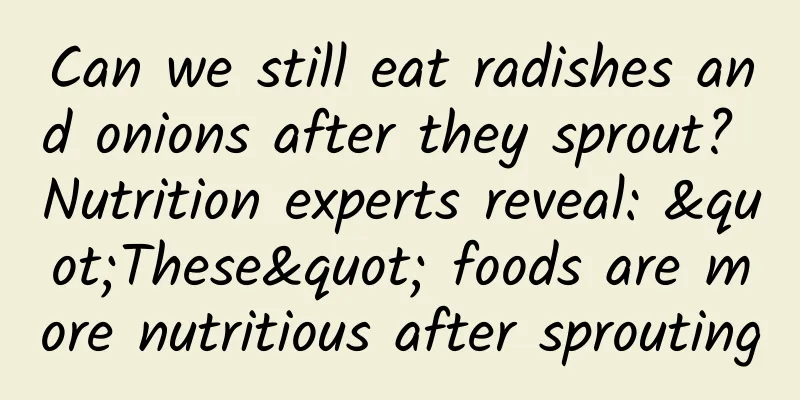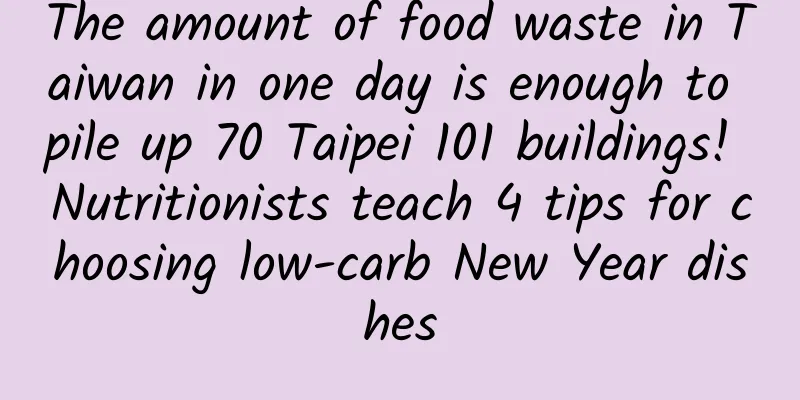Can we still eat radishes and onions after they sprout? Nutrition experts reveal: "These" foods are more nutritious after sprouting

|
Many housewives have the experience of leaving radishes and onions to sprout! However, these fruits and vegetables have only sprouted and are not moldy. It would be a pity to throw them away, but if we don't throw them away, we are worried that they will affect our health if we eat them. Can we still eat food after it has sprouted? Is it more nutritious? Or is it hiding toxins? Let the nutrition experts explain it to us one by one! Root vegetables that have sprouted are safe to eat! Potatoes are a special caseWang Jinkun, professor of the Department of Nutrition at Sun Yat-sen University of Medical Sciences, said that the so-called "germination" refers to the advanced stage of reproduction and growth of plant seeds and rhizomes. Generally speaking, under normal circumstances, most fruits and vegetables can still be eaten after sprouting. Only potatoes are special because they produce a large amount of solanine during the germination process. Eating too much may cause poisoning reactions, resulting in diarrhea, vomiting, headache and other uncomfortable symptoms. It is worth paying attention! In addition to potatoes, root vegetables such as onions, garlic, sweet potatoes, carrots, white radishes, and ginger can be eaten even after sprouting. Take spices such as onions and garlic, which mainly play the role of stir-frying and enhancing flavor. After sprouting, their spiciness and flavor will be slightly reduced during cooking, but there are no other disadvantages. In addition to changes in flavor, will the nutritional value of fruits and vegetables also change after they sprout? In this regard, Professor Wang Jinkun pointed out that for root and tuber ingredients, since they are a type of carbohydrate during the germination process, starch substances that can provide nutrients needed for plant growth will be decomposed and utilized in large quantities. Therefore, the sweetness of this type of food will decrease slightly after germination, and the taste will become rougher. Apart from this, there is not much difference in nutritional value. Beans and seeds are very special. The nutrition before and after germination is very different.However, it is worth noting that the nutritional value of beans and seeds before and after germination is different! Professor Wang Jinkun mentioned that before discussing the changes, it is recommended to first divide seeds and legumes into two categories: "starch" and "oil and protein" based on the content and distribution of nutrients: Type 1/Starch: Red beans and mung beans are both starchy foods. During the germination process, the starch content of these beans will decrease slightly due to energy conversion, and unique natural enzymes will be synthesized. Moderate consumption of sprouted mung beans and red beans helps intestinal digestion and absorption. However, it should be reminded that the purine content of red beans and mung bean sprouts is relatively high. People with gout or high uric acid levels should avoid consuming them in excess. Red beans and mung beans are both starchy foods. During the germination process, the starch content of these beans will decrease slightly due to energy conversion, and unique natural enzymes will be synthesized. Moderate consumption of sprouted mung beans and red beans helps intestinal digestion and absorption. Type 2/Fats and proteins: As for soybeans and black beans, from a nutritional point of view, they are beans that are relatively rich in fat and protein. During the germination process, more vitamins and enzyme components will be released, which can better help break down proteins into small molecule proteins that are easier for the human body to absorb. In addition, the amylase produced during the germination process is more conducive to the decomposition of polysaccharides into oligosaccharides with relatively small molecules that are easy to digest and absorb by the human gastrointestinal tract, thereby reducing the burden of gastrointestinal digestion and absorption. It naturally helps reduce the problems of bloating and gas after eating beans. It is harmless to continue eating fruits and vegetables after they sprout, but if they become moldy, they must be thrown awayProfessor Wang Jinkun also reminded that although most foods can still be eaten after sprouting, it is important to remind you that it is best to eat fruits and vegetables as soon as possible after purchase while they are fresh. Professor Wang Jinkun also reminded that although most foods can still be eaten after sprouting, it is important to remind you that it is best to eat fruits and vegetables as soon as possible after purchase while they are fresh. In addition, if you find that vegetables and fruits have sprouted and have blue spots, white mushroom-like substances, or other signs of mold on the surface, it is not recommended to continue eating them. Because when food contains mold, the mold hyphae have actually already penetrated deeply into the entire food. Therefore, even if the moldy part is removed, the mold and the bacteria growing around it may still be ingested, which may lead to diarrhea, vomiting and other uncomfortable reactions. Be careful! |
Recommend
What is the reason why my menstruation doesn’t come?
What is the reason why my menstruation doesn’t co...
Ovarian cysts cause weight gain
Xiaokun is my college classmate. She is very pret...
What are the reasons for delayed menstruation?
What are the reasons for delayed menstruation? De...
Stage actor Deng Jiuyun shares her secrets to maintaining good figure (Part 2)
Now, I am continuing to experiment to see if I ca...
Do you know what the early symptoms of ectopic pregnancy are in women?
What are the early symptoms of ectopic pregnancy ...
Treatment cost of congenital absence of vagina
Congenital absence of vagina is basically inferti...
What are the treatment measures for cervical hypertrophy?
Cervical hypertrophy is caused by long-term stimu...
What are the types of painless abortion?
Painless abortion has been increasingly used in r...
6 doses of Jingjie Siwu Decoction cures functional uterine bleeding
After years of being picky, Xiao Hu got married a...
What factors may lead to cervical hypertrophy?
If you want to cure gynecological diseases, it is...
What foods can be eaten to regulate cervical precancerous lesions
Cervical precancerous lesions are a gynecological...
What are the precautions for painless abortion?
Painless abortion is the best solution to contrac...
What causes partial hydatidiform mole?
What causes partial hydatidiform mole? Partial hy...
Diet care for vulvar leukoplakia
Vulvar leukoplakia is the most common gynecologic...
What are the direct causes of uterine fibroids?
Gynecological experts say that the causes of uter...









